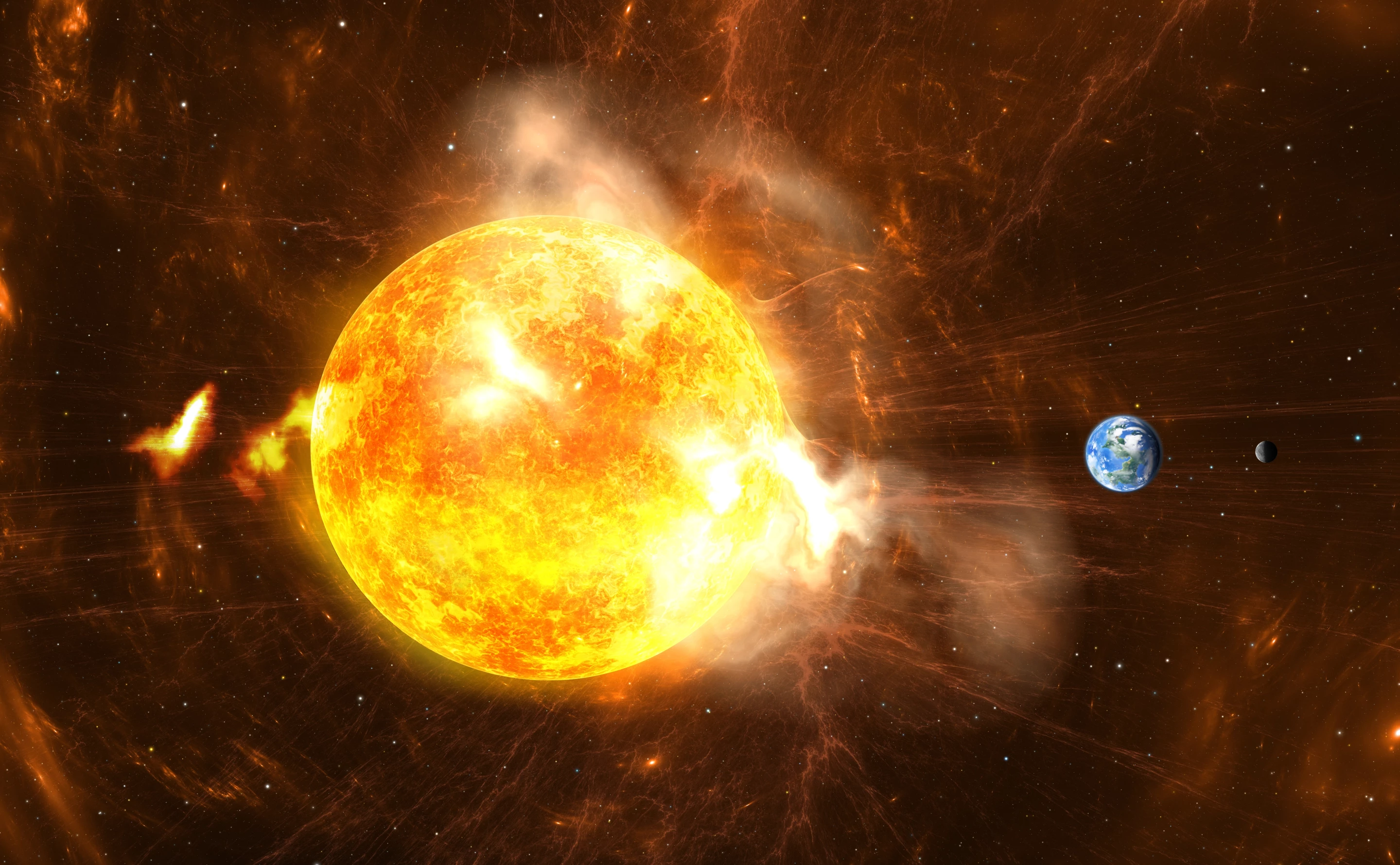A study published in the journal Earth and Planetary Science Letters has uncovered evidence of an extreme ancient solar storm that struck Earth over 14,000 years ago, during the waning days of the last Ice Age. This event is now confirmed as the most powerful solar particle storm on record, exceeding the infamous 775 CE storm that was long considered the strongest.
The Earth is constantly bombarded with cosmic rays, and when these particles enter our atmosphere, they supercharge the natural production of cosmogenic isotopes like radiocarbon. Trees capture this surge in isotopes and lock them into their annual growth rings, acting as a natural timestamp. These unusual spikes of isotopes that can be captured in tree rings are known as Miyake events.
“Miyake events allow us to pin down exact calendar years in floating archaeological chronologies,” says Professor Ilya Usoskin.
The causes of Miyake events are not entirely clear, however, it is thought that blasts of solar energy from our Sun is one likely culprit. These solar storms occur when the Sun releases a flurry of high-energy protons and nuclei. When these particles hit our planet, they can cause blackouts by disrupting modern satellites, power grids, and communication networks.
Although several Miyake events have been traced back to 994 CE, 663 BCE, 5259 BCE, and 7176 BCE, none surpassed the severity of the 775 CE spike. In 2023, researchers discovered a 40% spike in radiocarbon in a fossilized tree ring corresponding to 14,000 BCE, but the existing models could not quantify the event’s intensity under ancient glacial climatic conditions.
The researchers at the University of Oulu, Finland, developed a chemistry-climate model, dubbed SOCOL:14C-Ex, finely tuned to Holocene conditions. The model confirmed this Miyake event to be 18% stronger than the 775 CE event. Researchers believe that this extreme particle event occurred between January and April in the year 12350 BCE. Compared to the largest modern solar storm event, which occurred on January 20, 2005, this ancient blast was 500 times more severe.
“The ancient event in 12350 BCE is the only known extreme solar particle event outside of the Holocene epoch, the past ~12,000 years of stable warm climate,” says the Postdoctoral Researcher Kseniia Golubenko. “Our new model lifts the existing limitation to the Holocene and extends our ability to analyze radiocarbon data even for glacial climate conditions.”
Recent solar storms have demonstrated the serious threats they pose to the Earth. For instance, the a solar storm on Halloween of 2003 stressed out power grids, causing an hour-long power outage in Sweden. High-frequency radio communications and navigation systems also experienced disruptions.
If a particle storm as strong as the 12350 BCE event hit Earth today, it would have cataclysmic impacts. These hypothetical impacts could include geomagnetically induced currents that would cause blackouts that could last for months; extreme magnetic field fluctuations triggering near complete loss of satellite internet, television, and communications; and auroras at lower latitudes.
The study has been published in Earth and Planetary Science Letters.
Source: University of Oulu





